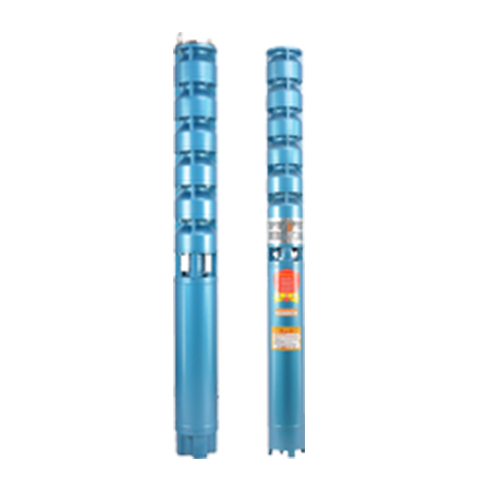Dec . 01, 2024 11:03 Back to list
submersible pump oil vs water filled
Submersible Pump Oil-Filled vs. Water-Filled
Submersible pumps play a crucial role in various applications, from draining water in construction sites to facilitating sewage treatment and even supporting irrigation systems in agriculture. One key decision when selecting a submersible pump is whether to choose an oil-filled or water-filled model. Each type has its unique advantages and disadvantages that can significantly impact their performance and efficiency.
Understanding Submersible Pumps
Before diving into the differences between oil-filled and water-filled submersible pumps, we must first understand how these pumps operate. A submersible pump is designed to be submerged in fluid, allowing it to push water or other liquids to the surface. Unlike standard pumps that operate above the fluid's surface, submersible pumps are more efficient at transferring fluid due to their location.
Oil-Filled Submersible Pumps
Oil-filled submersible pumps use oil for cooling and lubrication purposes. The motor and internal components are immersed in oil, which helps dissipate heat generated during operation. This design has several benefits
1. Enhanced Cooling The oil helps maintain optimal operating temperatures, thereby extending the pump's lifespan. Since the oil absorbs heat more effectively than water, it minimizes the risk of overheating, which can lead to pump failure.
2. Lubrication The oil serves as a lubricant for the motor’s components, reducing friction and wear. This lessens maintenance requirements and enhances longevity.
3. Increased Efficiency Oil-filled models generally exhibit higher efficiency rates, making them suitable for demanding operations. This can be particularly beneficial in sectors like mining and drilling, where reliability is critical.
However, oil-filled pumps also have drawbacks. They may be less environmentally friendly because, in the event of a leak, the oil can contaminate surrounding water sources. Additionally, they tend to be more expensive and heavier than their water-filled counterparts.
Water-Filled Submersible Pumps
submersible pump oil vs water filled

Water-filled submersible pumps, on the other hand, are cooled and lubricated by water. This design is typically simpler and lighter, leading to several advantages
1. Cost-Effectiveness Water-filled pumps are usually cheaper to manufacture and purchase, making them an attractive option for less demanding applications, such as household drainage or shallow well pumping.
2. Environmental Safety If a water-filled pump fails, the risk of environmental contamination is significantly lower compared to oil-filled models. This makes them a preferred choice in sensitive ecological areas.
3. Ease of Maintenance Since the pump operates in water, maintenance can be easier, and repairs often do not require the same level of expertise as those for oil-filled pumps.
Despite these advantages, water-filled pumps may have limitations, including
- Reduced Efficiency They typically do not handle high temperatures as well as oil-filled pumps, which might shorten their lifespan under heavy-duty applications.
- Potential for Rust and Corrosion Constant exposure to water can lead to rust and corrosion, particularly in less durable materials. This can impact the pump's performance over time.
Choosing the Right Option
The choice between oil-filled and water-filled submersible pumps ultimately depends on the specific application and requirements. For industrial settings or projects with high demands, oil-filled pumps are often preferable due to their efficiency and durability. Conversely, for residential applications or environments where environmental impact is a concern, water-filled pumps might be more suitable.
Conclusion
In summary, both oil-filled and water-filled submersible pumps offer distinct advantages and challenges. Understanding these differences is vital for selecting the right pump for a given application. By assessing factors such as environmental impact, cost, maintenance requirements, and operational demands, users can make informed decisions that align with their unique needs and conditions. Ultimately, the effectiveness of a submersible pump lies in its ability to perform reliably and efficiently, catering to the specific demands of the task at hand.
-
Submersible Water Pump: The Efficient 'Power Pioneer' of the Underwater World
NewsJul.01,2025
-
Submersible Pond Pump: The Hidden Guardian of Water Landscape Ecology
NewsJul.01,2025
-
Stainless Well Pump: A Reliable and Durable Pumping Main Force
NewsJul.01,2025
-
Stainless Steel Submersible Pump: An Efficient and Versatile Tool for Underwater Operations
NewsJul.01,2025
-
Deep Well Submersible Pump: An Efficient 'Sucker' of Groundwater Sources
NewsJul.01,2025
-
Deep Water Well Pump: An Efficient 'Sucker' of Groundwater Sources
NewsJul.01,2025
-
 Submersible Water Pump: The Efficient 'Power Pioneer' of the Underwater WorldIn the field of hydraulic equipment, the Submersible Water Pump has become the core equipment for underwater operations and water resource transportation due to its unique design and excellent performance.Detail
Submersible Water Pump: The Efficient 'Power Pioneer' of the Underwater WorldIn the field of hydraulic equipment, the Submersible Water Pump has become the core equipment for underwater operations and water resource transportation due to its unique design and excellent performance.Detail -
 Submersible Pond Pump: The Hidden Guardian of Water Landscape EcologyIn courtyard landscapes, ecological ponds, and even small-scale water conservancy projects, there is a silent yet indispensable equipment - the Submersible Pond Pump.Detail
Submersible Pond Pump: The Hidden Guardian of Water Landscape EcologyIn courtyard landscapes, ecological ponds, and even small-scale water conservancy projects, there is a silent yet indispensable equipment - the Submersible Pond Pump.Detail -
 Stainless Well Pump: A Reliable and Durable Pumping Main ForceIn the field of water resource transportation, Stainless Well Pump has become the core equipment for various pumping scenarios with its excellent performance and reliable quality.Detail
Stainless Well Pump: A Reliable and Durable Pumping Main ForceIn the field of water resource transportation, Stainless Well Pump has become the core equipment for various pumping scenarios with its excellent performance and reliable quality.Detail
